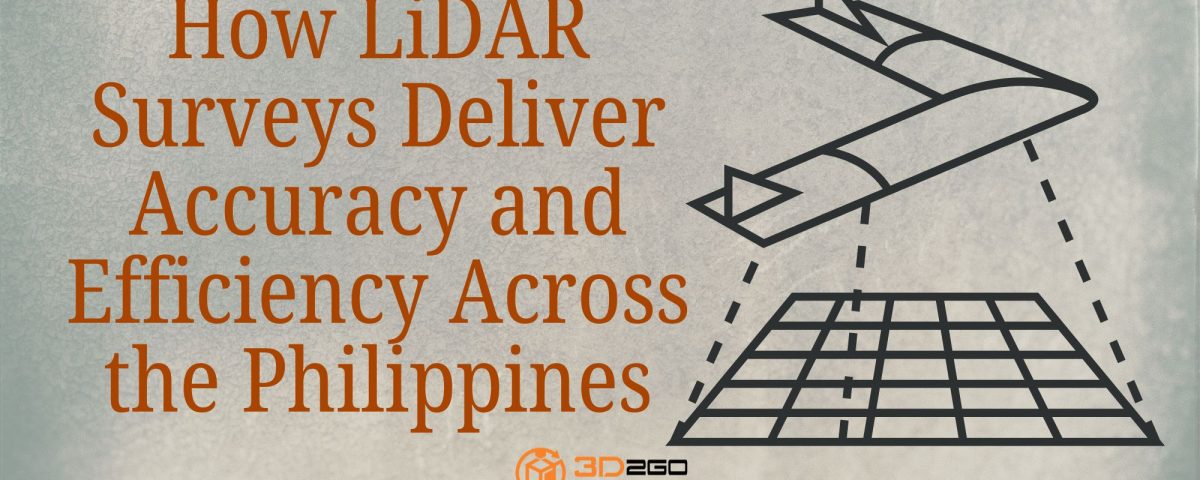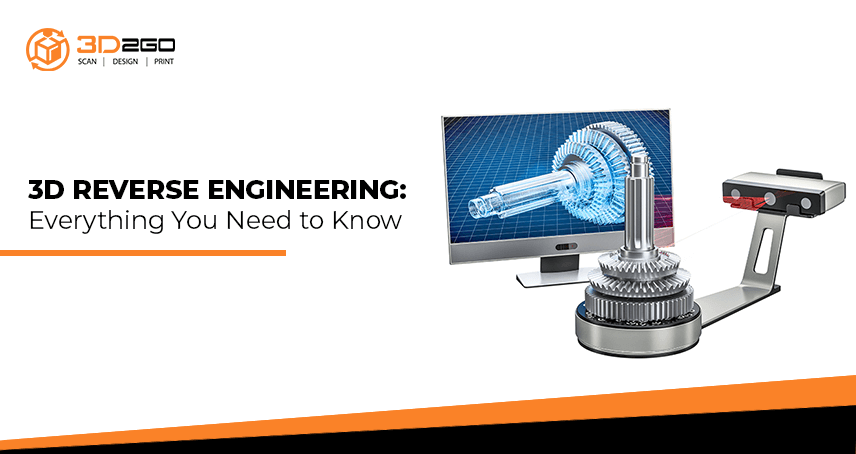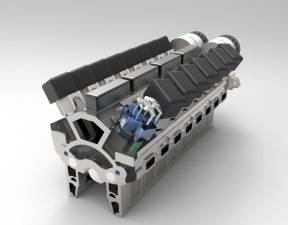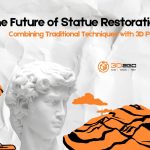
The Future of Statue Restoration: Combining Traditional Techniques with 3D Printing
October 4, 2024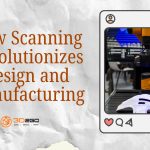
How Scanning Revolutionizes Design and Manufacturing
November 4, 2024LiDAR surveys are revolutionizing the way we capture and analyze data across various industries. From mapping intricate landscapes to assisting in disaster management, LiDAR (Light Detection and Ranging) technology is fast becoming a go-to solution for precise and efficient surveying. In the Philippines, the impact of LiDAR surveys has been profound, contributing to advancements in urban planning, environmental conservation, and mining. As demand for accurate geospatial data grows, industries are turning to LiDAR surveys to streamline their operations and enhance decision-making.
LiDAR surveys have gained widespread popularity in the Philippines, particularly in disaster-prone areas where the need for accurate terrain data is crucial. The ability of LiDAR to provide detailed 3D maps has transformed how local governments prepare for natural disasters. In recent years, LiDAR surveys have been used to create flood hazard maps, aiding in disaster risk reduction. This technology is not only improving public safety but also ensuring that development projects across the country are informed by precise topographical data.
The versatility of LiDAR surveys is one of the reasons they are being adopted in various sectors. From the vast landscapes of rural provinces to the bustling urban centers like Metro Manila, the need for accurate land and infrastructure surveys is driving the growth of LiDAR technology. In fields such as urban planning, mining, and environmental monitoring, LiDAR surveys are providing crucial data that enhances the accuracy of planning and execution. With its widespread applications, LiDAR surveys are set to play a key role in the Philippines’ ongoing development.
What Are LiDAR Surveys?
LiDAR surveys use laser technology to measure distances by emitting pulses of light that bounce off objects and return to a sensor. This data is then used to create highly accurate 3D models of the surveyed area. Whether it’s large-scale infrastructure projects or detailed environmental studies, LiDAR surveys can capture information that is both precise and actionable.
In the Philippines, the accuracy of LiDAR surveys has been a game-changer. The National Mapping and Resource Information Authority (NAMRIA) has employed LiDAR for mapping flood-prone areas, improving the government’s ability to respond to natural disasters. The DREAM (Disaster Risk Exposure Assessment for Mitigation) program, spearheaded by the University of the Philippines, has also relied heavily on LiDAR surveys to create accurate hazard maps. These maps have been used by local governments to develop disaster mitigation strategies and improve community resilience.
Key Applications of LiDAR Surveys in the Philippines
- Urban Planning and Infrastructure Development
One of the most impactful applications of LiDAR surveys in the Philippines is urban planning. As cities like Cebu and Manila continue to expand, urban planners face the challenge of managing growth while minimizing environmental impact. LiDAR surveys provide the detailed topographical data necessary for designing roads, bridges, and other infrastructure with precision. In Cebu, LiDAR data has been instrumental in developing flood control measures and improving drainage systems, ensuring that new developments are resilient to climate-related risks. - Disaster Risk Reduction and Management
The Philippines is no stranger to natural disasters such as typhoons, earthquakes, and landslides. LiDAR surveys have become a critical tool for disaster risk management, providing highly accurate data that helps local authorities anticipate and respond to potential hazards. In Mindanao, for example, LiDAR has been used to map out landslide-prone areas, enabling authorities to take preventive action. Flood hazard mapping, which relies on LiDAR-generated data, has been particularly crucial in Metro Manila, where the risk of severe flooding is high. These surveys help decision-makers implement timely interventions, saving lives and property. - Environmental Conservation
LiDAR surveys are also being employed in environmental monitoring and conservation efforts. In the Philippines, where natural resources such as mangrove forests and coral reefs are under threat, LiDAR has been used to map out and monitor these ecosystems. The Department of Environment and Natural Resources (DENR) has leveraged LiDAR technology to assess the health of coastal mangrove forests, which play a vital role in protecting shorelines from erosion and supporting marine biodiversity. With LiDAR’s precision, environmental agencies can track changes in these ecosystems over time and develop strategies to preserve them. - Mining and Resource Extraction
The mining industry is another sector that benefits greatly from LiDAR surveys. In the Philippines, mining companies use LiDAR to assess the topography of land before extraction begins. By creating detailed 3D maps of potential mining sites, companies can plan more efficient and safer operations. LiDAR surveys are also critical in monitoring the environmental impact of mining activities, ensuring compliance with national regulations. Philex Mining Corporation, one of the leading mining companies in the country, has used LiDAR surveys to streamline its exploration activities and minimize disruptions to surrounding communities.
The Benefits of LiDAR Surveys
LiDAR surveys offer numerous advantages over traditional surveying methods. One of the most significant benefits is speed. LiDAR surveys can cover large areas in a short amount of time, making them ideal for projects with tight deadlines. Additionally, the accuracy of LiDAR data is unmatched, providing a level of detail that is crucial for planning complex projects. Whether it’s identifying the most suitable locations for new infrastructure or assessing environmental risks, LiDAR surveys provide reliable data that enables better decision-making.
Another key benefit of LiDAR surveys is their ability to capture data in hard-to-reach areas. In a country like the Philippines, which is characterized by diverse terrain ranging from dense forests to mountainous regions, traditional surveying methods can be time-consuming and costly. LiDAR technology allows for accurate data collection in these challenging environments without the need for on-the-ground surveying teams.
The Future of LiDAR Surveys in the Philippines
As the Philippines continues to develop, the demand for accurate and efficient land surveys will only increase. LiDAR surveys are poised to play a central role in this growth, offering solutions that are not only cost-effective but also sustainable. With advancements in drone technology and the increasing accessibility of LiDAR systems, the potential for expanding its use across various sectors is immense.
LiDAR surveys are expected to become even more integral to urban planning and disaster management. As more cities in the Philippines embrace smart city technologies, the need for precise geospatial data will grow. LiDAR surveys, with their ability to provide real-time data, will be essential for managing urban growth and ensuring the sustainability of infrastructure projects.
In conclusion, LiDAR surveys are transforming the way industries in the Philippines approach planning, development, and environmental conservation. From urban planning and disaster risk reduction to mining and resource management, the applications of LiDAR technology are vast and continue to grow. As the country looks toward a future of innovation and progress, LiDAR surveys will remain at the forefront, providing the accuracy and efficiency needed to build a resilient and sustainable nation.


